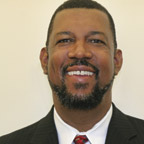
What a year! As we reflect back on 2008, we must say this is one for the record books. In addition to a historic presidential election, we have also seen the greatest economic crisis since the Great Depression. The current recession and global economic downturn may last for months to come and have some predictable cycles including slumping sales, rising unemployment and tight private- and public-sector budgets. In addition to these short-term economic challenges, our society will also face some long-term challenges. Foremost among these will be how we bridge the talent gap relative to the new 21st century innovation economy.
Beyond the current economic crisis are long-term economic trends. These include new economic growth sectors in “green” technologies leading to energy independence, bio-medical technology, robotics, Dilemmananotechnology and infrastructure reinvestment. These new sectors will drive economic growth for the foreseeable future. Our dilemma? We face a 21st century economy with a 20th century workforce. Here are some examples:
- In 1950, 60 percent of jobs were classified as “unskilled,” requiring minimal education (i.e. a high school education or less). About 20 percent were considered “skilled,” requiring education, training or certification beyond high school. The remaining 20 percent were considered “professional,” requiring four or more years of college.
- In 2004, about 15 percent of jobs were considered unskilled, 65 percent skilled and 20 percent professional.
- While there has been an increased need for higher educated and skilled workers, our educational system has not been able to keep up. In the 20th century, educational achievement improved until the late 1960s. U.S. high school graduation rates peaked in the 1960s at about 80 percent. Since then, they have declined to about 70 percent today.
- In addition to unacceptable graduation rates, Illinois high school testing data show that only about 50 to 60 percent of our students are meeting basic academic competencies in reading, math and science.
- In addition to qualitative deficits, the American workforce is facing quantitative shortfalls. Projections from the U.S. Department of Labor indicate a serious lack of skilled workers will grow to 5.3 million in 2010 and 14 million by 2015. Locally, this means a projected shortfall of about 7,000 skilled workers in central Illinois within the next five years.
The above examples illustrate that we will have some serious challenges for the foreseeable future in producing the quantity and quality of workforce necessary to compete in the new global knowledge and innovation economy. Ironically, the slumping economy will produce increasing numbers of dislocated workers as economic conditions decline and unemployment rises. In addition, we have literally millions of unemployed or undereducated workers lacking the increased skill set for the new economy. How we address this dilemma will determine our ability to compete and prosper as a society in the 21st century. iBi

